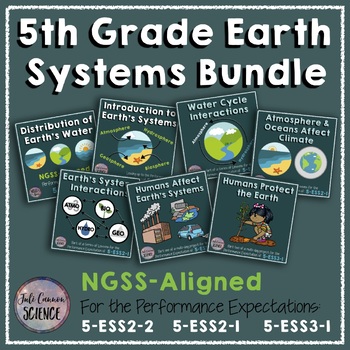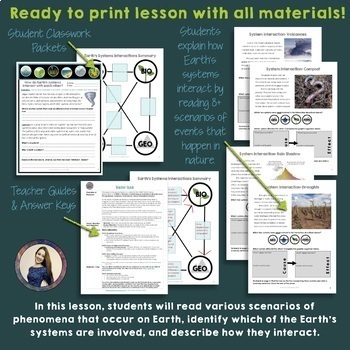NGSS 5th Grade Earth Systems Bundle
- Zip
What educators are saying
Products in this Bundle (7)
showing 1-5 of 7 products
Bonus
Also included in
- The bundle of all bundles! How much time do you waste scrolling for science lesson plans that are NGSS-aligned, interesting, and engaging? Reclaim that time with one simple click. Save 20% when you purchase this resource!Want to make sure these lessons match your teaching style before purchasing? DoPrice $102.00Original Price $127.50Save $25.50
Description
Save your time and engage your students with this NGSS-aligned 5th grade unit! It covers three NGSS 5th grade Earth Systems standards using phenomena and hands on experiences!
NOTE: There are SO many topics that you can cover about Earth's systems. I chose to focus in detail on water-related phenomena (Lessons: the Water Cycle, Atmosphere and Oceans Affect Climate, Humans Affecting the Chesapeake Bay). Although I used the Earth's Systems Interactions lesson to discuss many other phenomena at a faster pace, if you have very specific phenomena that must be included in depth, you may need to supplement this bundle. Please add a question to the resource or email me at juli@julicannonscience.com out if you have questions!
LIST OF LESSONS INCLUDED:
Part 1: Why do water shortages occur if most of the Earth is covered in water? (5-ESS2-2)
• Lesson 1: Distribution of Water on Earth
Part 2: How do Earth's systems interact with each other? (5-ESS2-1)
• Lesson 2: Introduction to Earth's Spheres
• Lesson 3: Water Cycle Interactions
• Lesson 4: Atmosphere and Oceans Affect Climate
• Lesson 5: Earth's Systems Interactions
Part 3: How do humans affect the Earth? (5-ESS3-1)
• Lesson 6: Human Impact on Earth
• Lesson 7: Humans Protect the Earth
Includes an end-of-unit activity incorporating all three standards that can be used as a summative assessment or as a review activity!
Each lesson includes engaging, ready to print resources, including:
• Student Worksheets
• Answer Keys
• Detailed Teacher Guides
Lessons are non-editable PDF.






